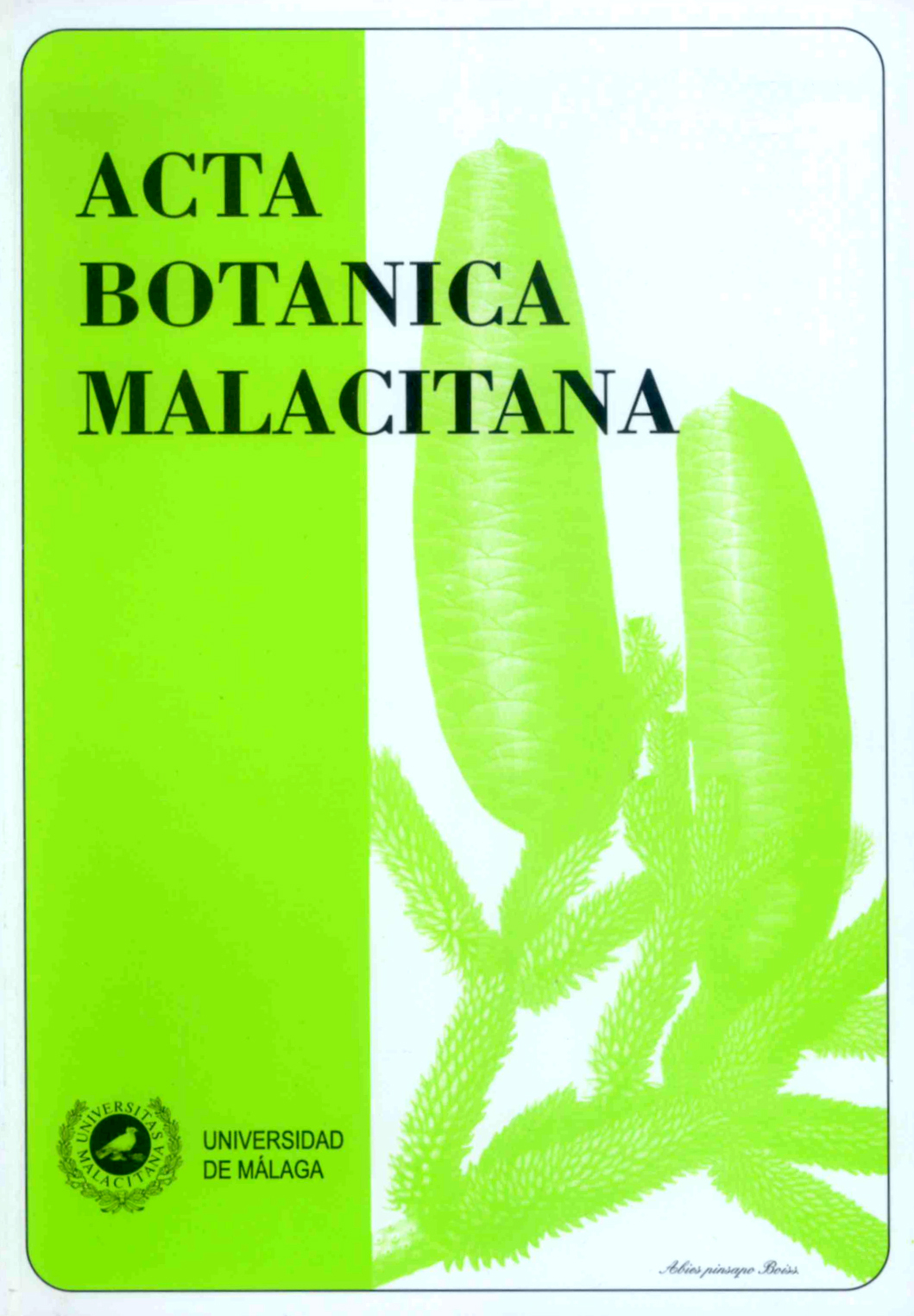Datos sobre la vegetación de los humedales de América del Sur. De las sabanas bolivianas a los Llanos del Orinoco (Venezuela).
DOI:
https://doi.org/10.24310/abm.v33i0.6987Abstract
RESUMEN. Datos sobre la vegetación de los humedales de América del Sur. De las sabanas bolivianas
a los Llanos del Orinoco (Venezuela). En base a los inventarios fitosociológicos levantados en 3
humedales de América del Sur (Llanos de Moxos y Pantanal, Bolivia; Llanos del Orinoco, Venezuela)
damos a conocer semejanzas y diferencias en la composición de comunidades vegetales. Como
resultado, describimos 4 asociaciones [Hydrocleydo nymphoidis-Nymphoidetum herzogii (comunidades
de ninfeidos), Oxycaryo cubensis-Eleocharitetum acutangulae (graminales flotantes), Ipomoeo
fistulosae-Sennetum aculeatae (vegetación nitrófila) y Bacopo myriophylloidis-Eleocharitetum
minimae (pastizales inundables)] y una alianza (Echinodorion boliviani). Entre los humedales
observados, 9 comunidades vegetales son comunes; Ludwigio sedoidis-Eichhornietum diversifoliae
(comunidades de ninfeidos), Spilantho uliginosi-Paspaletum orbiculati (pastizales inundables) y
Thalietum geniculatae (asociación de grandes helófitos) son características de los Llanos del Orinoco,
mientras que Bacopo myriophylloidis-Eleocharitetum minimae, comunidades de Pontederia parviflora
(comunidades helofíticas de aguas someras), Hydrocleydo-Nymphoidetum herzogii y Rhabdadenio-
Cyperetum gigantei (asociación de grandes helófitos) lo son de los llanos neotropicales situados al S
de la Cuenca Amazónica.
Palabras clave. Vegetación, sintaxonomía, Bolivia, Venezuela, humedales.
ABSTRACT. Data about the vegetation of the wetlands of South America. From the Bolivian savannas
to the Llanos of the Orinoco (Venezuela). Based on the phytosociological relevés made up in 3 wetlands
of South America (Llanos of Moxos and Pantanal, Bolivia; Llanos of the Orinoco, Venezuela),
similarities and differences in the composition of plant communities are presented. As a result, 4
associations [Hydrocleydo nymphoidis-Nymphoidetum herzogii (water lily communities), Oxycaryo
cubensis-Eleocharitetum acutangulae (floating grasslands), Ipomoeo fistulosae-Sennetum aculeatae
(nitrophilous vegetation) and Bacopo myriophylloidis-Eleocharitetum minimae (flooding pastures)]
and one alliance (Echinodorion boliviani) are described. In the observed wetlands, 9 plant communities
are commons; Ludwigio sedoidis-Eichhornietum diversifoliae (water lily communities), Spilantho
uliginosi-Paspaletum orbiculati (flooding pastures) and Thalietum geniculatae (high helophytic
vegetation) are characteristics of the Llanos of the Orinoco, while Bacopo myriophylloidis-
Eleocharitetum minimae, Pontederia parviflora plant communities (communities of shallow water),
Hydrocleydo-Nymphoidetum herzogii and Rhabdadenio-Cyperetum gigantei (high helophytic
vegetation) are presents in the Neotropical lands placed to the southern of Amazonian Basin.
Key words. Vegetation, syntaxonomy, Bolivia, Venezuela, wetlands.
Downloads
Metrics
Downloads
Published
How to Cite
Issue
Section
License
All information related to the licensing of published works in Acta Botanica Malacitana and copyright can be found in our Editorial Policy.







1.png)
